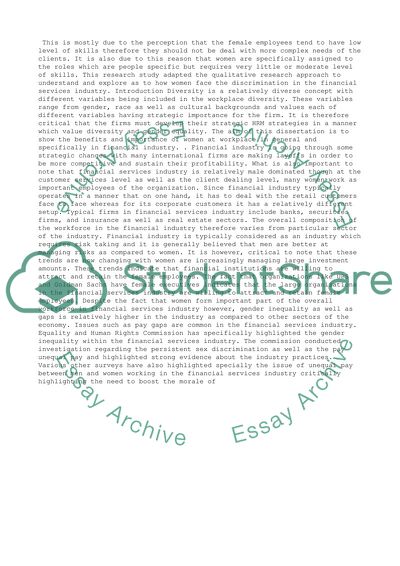Cite this document
(“Gender Diversity at the workplace in the Financial Industry Dissertation”, n.d.)
Gender Diversity at the workplace in the Financial Industry Dissertation. Retrieved from https://studentshare.org/business/1465624-gender-diversity-at-the-workplace-in-the-financial-industry
Gender Diversity at the workplace in the Financial Industry Dissertation. Retrieved from https://studentshare.org/business/1465624-gender-diversity-at-the-workplace-in-the-financial-industry
(Gender Diversity at the Workplace in the Financial Industry Dissertation)
Gender Diversity at the Workplace in the Financial Industry Dissertation. https://studentshare.org/business/1465624-gender-diversity-at-the-workplace-in-the-financial-industry.
Gender Diversity at the Workplace in the Financial Industry Dissertation. https://studentshare.org/business/1465624-gender-diversity-at-the-workplace-in-the-financial-industry.
“Gender Diversity at the Workplace in the Financial Industry Dissertation”, n.d. https://studentshare.org/business/1465624-gender-diversity-at-the-workplace-in-the-financial-industry.


